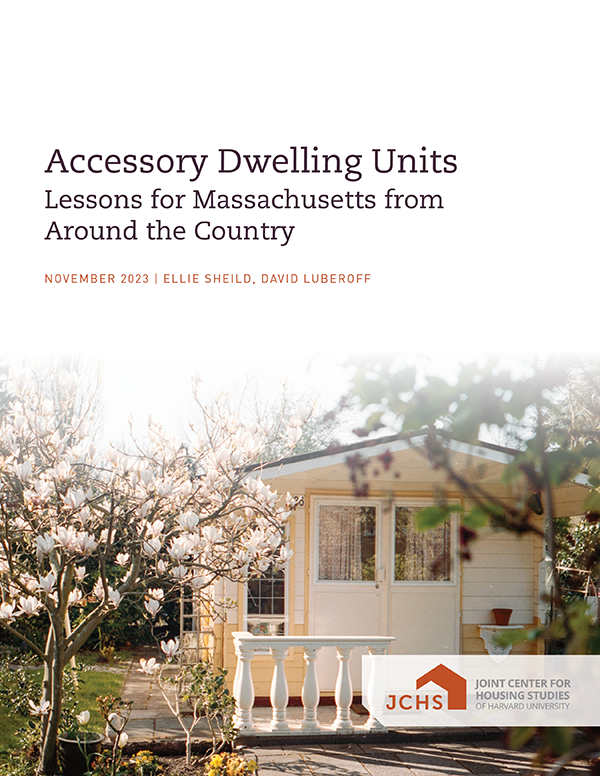Accessory Dwelling Units: Lessons for Massachusetts from Around the Country
Accessory Dwelling Units or ADUs – small, independent living units that are inside, attached to, or detached but on the same parcel as a primary residence – have the potential to address a variety of housing-related challenges like affordability, equity, and environmental issues. Moreover, because ADUs generally are small infill units, they can achieve these gains without significantly altering the character of existing residential neighborhoods.
Recognizing this potential, in the last two decades, many localities have tried to encourage the construction of more ADUs by changing their zoning codes to remove restrictions that limited homeowners’ ability to build ADUs. More recently, several states have followed suit by changing state laws that govern local zoning to require that localities approve ADUs that meet state standards. These changes, in turn, have spurred efforts by a variety of public, private, and nonprofit actors to remove other barriers that have hindered construction such as limited public knowledge about ADUs, the unavailability of financing options for ADUs, and a lack of builders and workers with the skills and knowledge needed to construct ADUs.
While these changes are occurring across the country, to date, they have been slow to come to Massachusetts, where, since state law gives localities broad powers to regulate the construction of ADUs, most (but not all) of the state’s cities and towns continue to greatly restrict the construction of ADUs. As a result, for several years, a broad coalition has been pushing for state legislation that would greatly constrain localities’ ability to limit the creation of new ADUs. To help inform that discussion (and similar discussions in other states considering similar measures), this paper examines several notable efforts to encourage ADUs from around the country, with a particular focus on approaches taken in Portland, Oregon and the state of New Hampshire.
Three key insights emerge from this research. First, and most importantly, efforts to significantly increase the production of ADUs are most likely to succeed if they include state laws requiring by-right local approvals of ADUs that meet statewide standards for ADUs’ size, massing, design, and use. Second, in establishing such requirements, policymakers must decide whether to pursue a more ambitious and politically controversial “comprehensive” approach that also limits localities’ ability to impose restrictions on occupancy and require extensive new on-site parking or a less controversial “incremental” approach that requires by-right approvals but is silent on occupancy and parking. Finally, taking these steps will spur others to address the non-legal barriers that limit the construction of ADUs such as providing homeowner education programs and offering new ways to finance ADUs.

